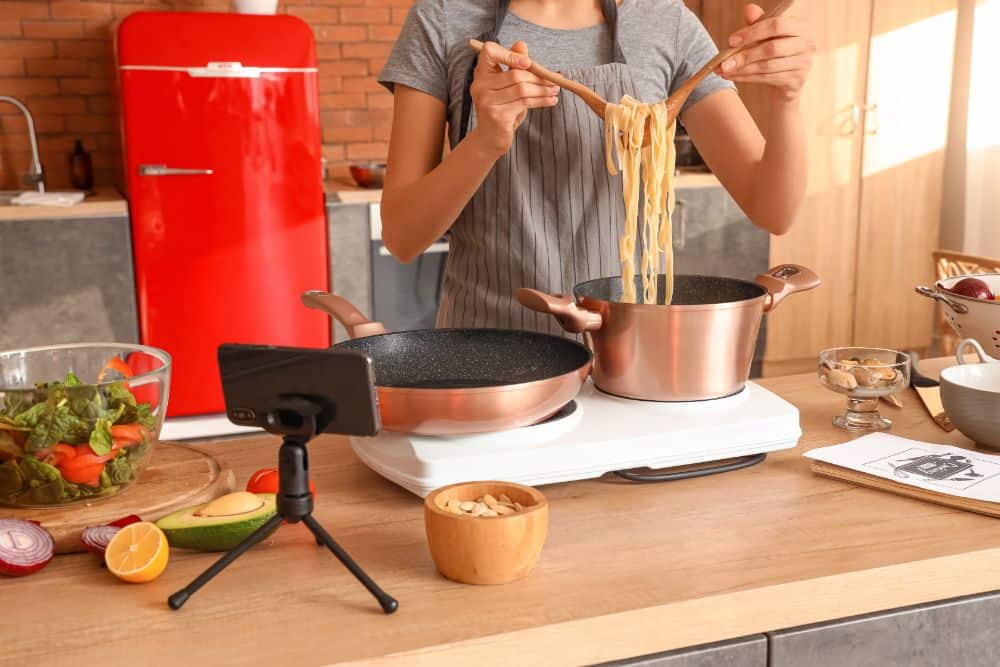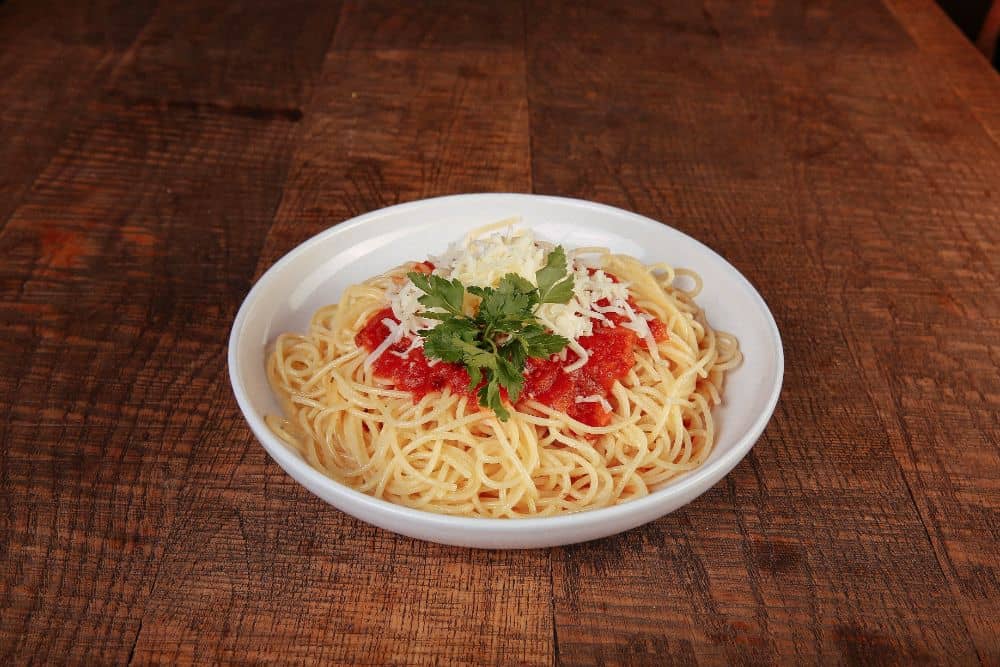From the simple college staple to the authentic taste of hand-crafted pasta sauce over a bed of stringy noodles, there is nothing quite the same as a bowl of spaghetti. Enjoy it with meatballs or garlic bread, but the real foundation of this dish is the noodle.
Perfectly cooked spaghetti will make or break this pasta dish. But how do you cook the perfect spaghetti? This article will go over several ways to ensure your spaghetti is cooked perfectly and one way not to. Keep reading to learn more!
Whether you are making spaghetti from fresh pasta or dry pasta, there is a perfect level of doneness that you are striving for. This level is called al dente. In Italian, this means “to the tooth.”

In practice, al dente is that point of cooking where spaghetti is immersed in boiling water just to the point where the spaghetti noodles are tender and flexible but still has a little bit in the center. Al dente is perfect for a couple of reasons. The main and perhaps most important reason is the perfect texture while eating the pasta. The second reason is it gives your spaghetti noodle the strength to withstand twisting around your fork and being slurped up without fear of it breaking.
Your pasta noodle could be chewy and difficult to eat if you cooked it for less time. By increasing cooking time, you run into the issue of it falling apart and just being a mushy mess.
There are a few different ways you can be sure to cook your spaghetti perfectly every time. These methods can be used alone or together. For example, using the time method together with the tasting method.
The most straightforward way of cooking pasta is to use a timer. Most (but not all!) pasta boxes will contain the cooking instructions on the packaging. These instructions will usually give you a recommended time to cook to reach that perfect level of al dente.
To use this method, all you need to do is start boiling your pasta water and add your pasta once the water is boiling. Use a kitchen timer or even your phone to allow the pasta to boil for the exact time. If you are given a time range, go with the shortest time. If that doesn’t seem done enough (perhaps by using one of the other two methods below to test it), then add a minute at a time.
If you are using this method alone and not testing it with one of the other two methods below, then you simply need to trust the process.
If you’re not quite ready to put your full faith into the time written on a box, or if your pasta didn’t come with a time, the rest of the methods will all help cook perfect spaghetti regardless.
With this method, cook your pasta in a large pot in roiling boil. Until your pasta appears flexible. Take one strand of pasta out of the boiling water (be careful!) and allow it to cool down long enough for you to take a bite. To know that you have fully cooked pasta, you're looking for soft pasta on the outside with a bit of bite on the inside.

Another option is to dip the spaghetti strand in ice water to cool it instantly, allowing you to taste it faster. The ice water will stop the cooking process.
If you’re not a fan of trying to eat boiling hot pasta, then this may be a great option for you. It’s also a great option if you’re worried about the spaghetti overcooking while you are trying to taste it.
This method is very simple. All you need to do is take a strand of spaghetti out of the pot and cut it in half. You want your spaghetti to have a small amount of lighter color at the center of the crosssection of your spaghetti. If you want your spaghetti on the more al dente side (slightly chewy pasta), aim for when that lighter center is a little larger.
This option is perfect for finding out the doneness of your pasta right away, rather than waiting for it to be too cool. In some cases, you may not want to eat raw pasta at all.
Don't ever rinse cooked pasta with cold water. Doing so removes the starch from the pasta, which is needed for the tomato sauce to effectively cling to the pasta.
The only exception to this rule is if you're making a pasta salad. In addition to adding olive oil, removing the starch can help to keep the pasta noodles from sticking to each other.
An Oldie but a Goodie, Gordon Ramsay Cooking Spaghetti to Perfection
Once you are finished cooking your spaghetti to perfection, always remember to drain it from the water. If you just keep the pasta in hot water- the effect will be similar to extending the cooking time. Your spaghetti will continue cooking and you will find yourself with a mushy mess.

In some recipes, you may want to keep a little of that pasta water before tossing it all down the sink. The cooking water is often used in sauces to add flavor and reach the perfect consistency.
Well, there you have it. We have covered three different ways to make sure your spaghetti is done and one way not to. Perfectly cooked pasta is within your grasp.
Hopefully, this means you’ll never waste time hurling pasta at walls anymore. Not only is it messy, but it doesn’t tell you anything useful. Follow these methods to get perfect spaghetti every time.
The short answer to this question is yes. If you throw cooked spaghetti at a wall, it will stick. However, despite it being the most commonly cited way to test how done your spaghetti is, it isn’t the best way. Here’s why.
Raw spaghetti will never stick to a wall; that much is certain. However, as you cook spaghetti, the outside is cooked much quicker than the inside is. With this knowledge, it is easy to assume that you could throw undercooked pasta that is still crunchy in the middle at the wall, and it will stick. You could throw mushy overcooked pasta at the wall, and it will stick. And yes, you can throw perfectly al dente pasta at the wall, and it will stick.
While this is the method you’ll likely hear about the most often, it is far from accurate. If this is the method you use to test your pasta, it will be sheer luck if it is correctly done.
Technically yes. Dry pasta is the only one that will give that al dente texture that still has a slight bite on the inside. Dried pasta, in general, also takes a little bit longer to cook. It’s the type that most people are going to be picking up from the grocery store to make their next batch of spaghetti.
Fresh pasta can either be made right in your kitchen or bought. It will often be refrigerated if you buy it in the store as it’s not shelf-stable like dry pasta. Fresh pasta, however, cooks much faster than dry pasta, only taking a couple of minutes on average.
Reaching al dente, however, is technically impossible with fresh pasta. You will go straight from raw to mush if you don’t stop at just the right time. With fresh pasta, you are aiming for a texture that is soft and slightly springy.
Whichever you pick, both will make an excellent bowl of spaghetti.
Baked spaghetti is generally finished in a variety of ways in the oven and is typically combined with other ingredients like meat sauce, spaghetti sauce, water, cheese and creams and baked in a baking dish. Depending on the spaghetti recipe, you may not have to boil l the spaghetti pasta prior to baking. Some recipes require boiled pasta, others require partially boiled pasta.
